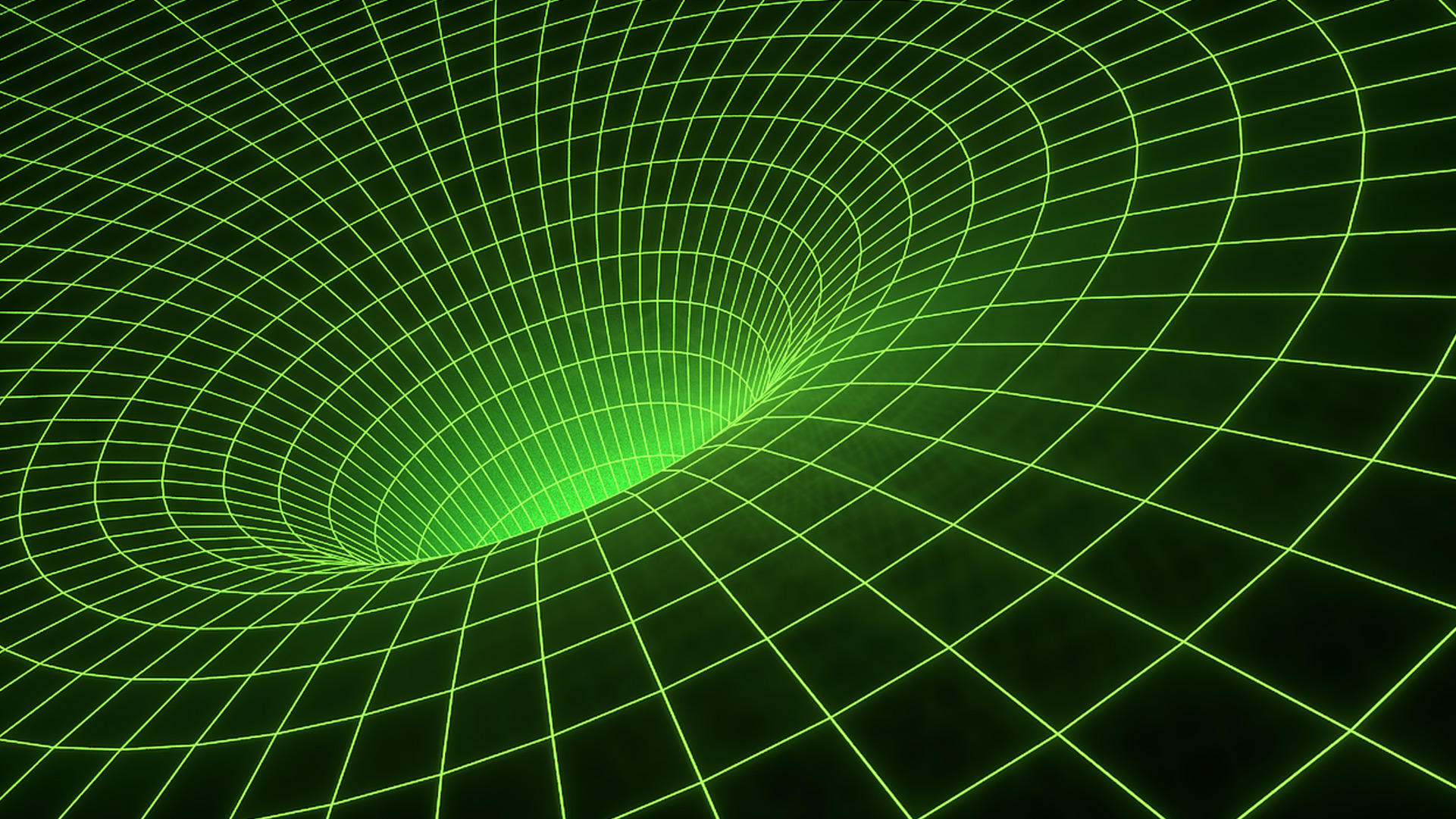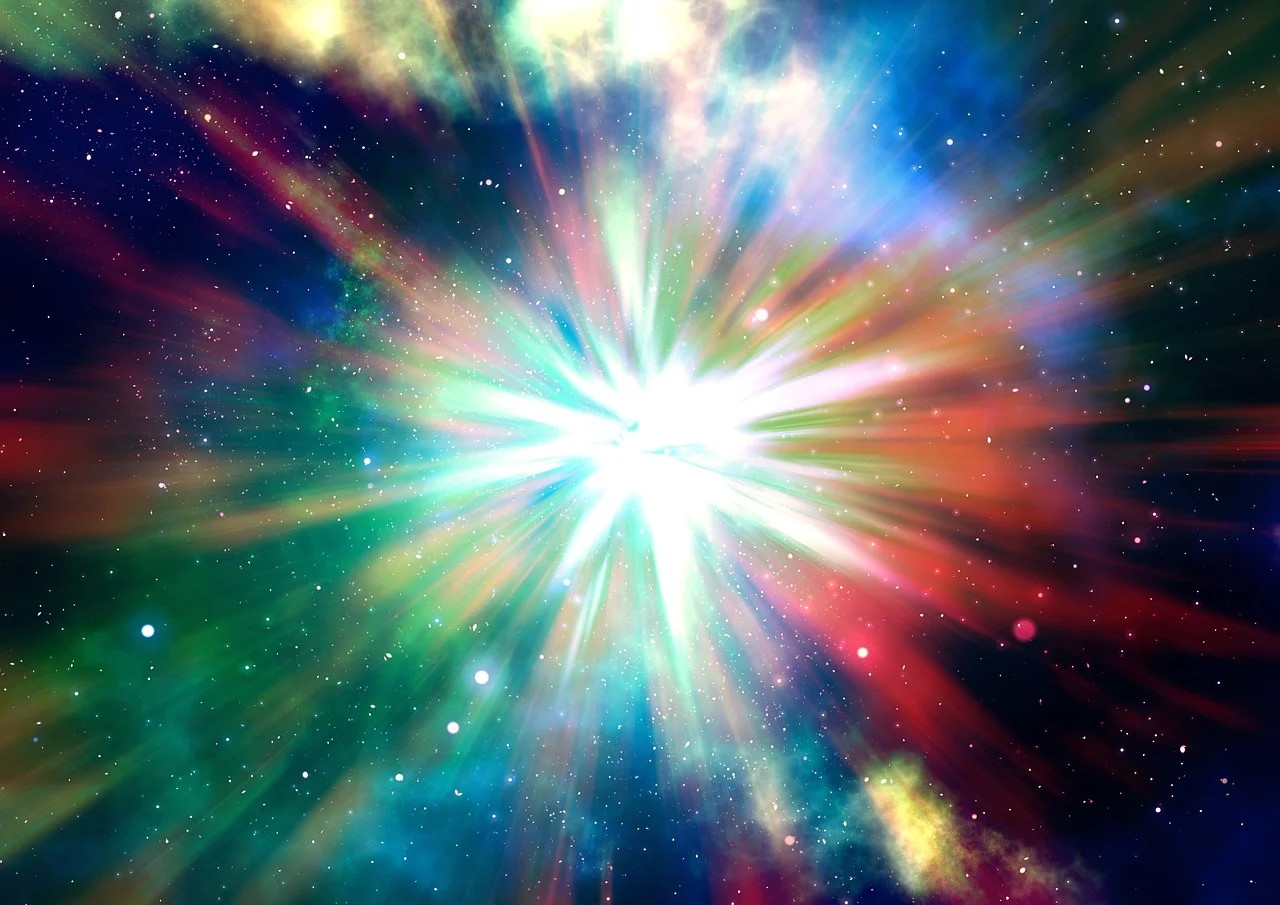Our Universe wasn’t empty, even before the Big Bang

- The Universe, as it continues to expand and cool, will eventually become empty, but never completely so.
- Because the Universe’s expansion is accelerating due to dark energy, there will always be a radiation background permeating all of space.
- Even in the distant past, during the period of cosmic inflation that occurred before the Big Bang, that background radiation was present, and fairly warm: at around 100 K. The Universe was never truly empty.
When it comes to the physical Universe, the notion of “nothing” may truly be possible only in theory, not in practice. As we see the Universe today, it appears full of stuff: matter, radiation, antimatter, neutrinos, and even dark matter and dark energy, despite the fact that we don’t truly know the ultimate, fundamental nature of the latter two. Yet even if you took away every single quantum of energy, somehow removing it from the Universe entirely, you wouldn’t be left with an empty Universe. No matter how much you take out of it, the Universe will always generate new forms of energy.
How is this possible? It’s like the Universe itself doesn’t understand our idea of “nothing” at all; if we were to remove all the quanta of energy from our Universe, leaving behind only empty space, we would immediately expect that the Universe would be at absolute zero: with no energetic particles anywhere to be found. Yet that’s not the case at all. No matter how “empty” we artificially make the expanding Universe, the fact that it’s expanding would still spontaneously and unavoidably generate radiation. Even arbitrarily far into the future, or all the way back before the hot Big Bang, the Universe would never truly be empty. Here’s the science of why.

Here in our Universe today, it’s very clear that space is anything but empty. In every direction we look, we see:
- stars,
- gas,
- dust,
- other galaxies,
- galaxy clusters,
- quasars,
- high-energy cosmic particles (known as cosmic rays),
- and radiation, both from starlight and left over from the Big Bang itself.
If we had better “eyes,” which is to say, superior tools at our disposal, we could also detect the signals that we know ought to be out there, but which cannot be detected with current technology. We’d see gravitational waves from every mass that’s accelerating through a changing gravitational field. We’d “see” whatever is responsible for dark matter, rather than simply its gravitational effects. And we’d see black holes, both active and quiescent, rather than simply the ones that are emitting the greatest amounts of radiation.

All of what we see isn’t simply occurring in a static Universe, but rather in a Universe that’s evolving over time. What’s particularly interesting from a physical point of view is how our Universe is evolving. On a global scale, the fabric of our Universe — spacetime — is in the process of expanding, which is to say that if you put any two well-separated “points” down in your spacetime, you’ll find that the:
- proper distance (as measured by an observer at one of the points) between those points,
- the light-travel time between those points,
- and the wavelength of the light that travels from one point to the other,
will all increase over time. The Universe is not just expanding, but also cooling concurrently as a result of the expansion. As light shifts to longer wavelengths, it also shifts toward lower energies and cooler temperatures; the Universe was hotter in the past and will be even colder in the future. And, through it all, the objects with mass and/or energy in the Universe gravitate, clumping and clustering together to form a great cosmic web.

If you could somehow eliminate it all — all the matter, all the radiation, every single quanta of energy — what would be left?
In a sense, you’d just have empty space itself: still expanding, still with the laws of physics intact, and still with the inability to escape the quantum fields that permeate the Universe. This is the closest you can get, physically, to a true state of “nothingness,” and yet it still has physical rules it must obey. To a physicist in this Universe, removing anything else will create an unphysical state that no longer describes the cosmos we inhabit.
This means, in particular, that what we perceive as “dark energy” today would still exist in this “Universe of nothing” that we’re imagining. In theory, you can take every quantum field in the Universe and put it into its lowest-energy configuration. If you do this, you’d reach what we call the “zero-point energy” of space, which means that no more energy can ever be taken out of it and put to use performing some type of mechanical work. In a Universe with dark energy, a cosmological constant, or the zero-point energy of quantum fields, there’s no reason to infer that the zero-point energy would actually be zero.

In our Universe, in fact, it’s observed to have a finite but positive value: a value that corresponds to an energy density of about ~1 GeV (about the rest mass energy of a proton) per cubic meter of space. This is a tremendously small amount of energy, of course. If you took the energy inherent in a single human body — largely from the mass of your atoms — and spread it out to have the same energy density as the zero-point energy of space, you’d find that you occupied as much space as a sphere that was roughly the volume of the Sun!
In the very far future, googols of years from now, the Universe will behave as though this zero-point energy is the only thing left within it. The stars will all burn out; the corpses of these stars will radiate all their heat away and cool to absolute zero; the stellar remnants will gravitationally interact, ejecting the majority of objects into intergalactic space, while the few remaining black holes grow to enormous sizes. Eventually, even they will decay away through Hawking radiation, and that’s where the story really gets interesting.

The idea that black holes decay might be justifiably remembered as Stephen Hawking’s most important contribution to science, but it holds some important lessons that go well beyond black holes. Black holes have what’s called an event horizon: a region where once anything from our Universe crosses over this imaginary surface, we can no longer receive signals from it. Typically, we think of black holes as the volume inside the event horizon: the region from which nothing, not even light, can escape. But if you give it enough time, these black holes will evaporate completely.
Why do these black holes evaporate? Because they radiate energy, and that energy gets drawn from the mass of the black hole, converting mass to energy via Einstein’s E = mc². Close to the event horizon, space is more severely curved; farther from the event horizon, it’s less curved. This difference in curvature corresponds to a disagreement as to what the zero-point energy of space is. Someone close to the event horizon will see that their “empty space” is different from the “empty space” of someone farther away, and that’s a problem because quantum fields, at least as we understand them, are continuous and occupy all of space.

The key thing to realize is that if you’re at any location outside of the event horizon, there’s at least one possible path that light could take to travel to any other location that’s also outside of the event horizon. The difference in the zero-point energy of space between those two locations tells us, as first derived in Hawking’s 1974 paper, that radiation will be emitted from the region around the black hole, where space is curved the most strongly.
The presence of the black hole’s event horizon is an important feature, as it means that the energy required to produce the radiation around this black hole must come from the mass, via Einstein’s E = mc², of the black hole itself. (Although some have argued, compellingly, that it may be possible to produce this radiation without an event horizon.) Additionally, the spectrum of the radiation is a perfect blackbody with its temperature set by the black hole’s mass: lower masses are hotter and heavier masses are colder.
The expanding Universe, of course, doesn’t have an event horizon, because it isn’t a black hole. However, it does have something that’s analogous: a cosmic horizon. If you’re located anywhere in spacetime and you consider an observer at another location in spacetime, you’d immediately think, “Oh, there must be at least one possible path light could take that connects me to this other observer.” But in an expanding Universe, that’s not necessarily true. You have to be located close enough to one another so that the expansion of spacetime between those two points doesn’t prevent emitted light from ever arriving.

In our present-day Universe, that corresponds to a distance that’s approximately 18 billion light-years away. If we emitted light right now, any observer within 18 billion light-years of us could eventually receive it; anyone farther away never would, owing to the Universe’s ongoing expansion. We can see farther away than that because many sources of light were emitted long ago. The earliest light that’s arriving right now, 13.8 billion years after the Big Bang, is from a point that’s presently about 46 billion light-years away. If we were willing to wait an eternity, we’d eventually receive light from objects that are presently as far away as ~61 billion light-years; that’s the ultimate limit.
From any observer’s point of view, there exists this cosmological horizon: a point beyond which communication is impossible, since the expansion of space will prevent observers at these locations from exchanging signals beyond a certain point in time.
And just like the existence of a black hole’s event horizon results in the creation of Hawking radiation, the existence of a cosmological horizon must also — if the same laws of physics are to be obeyed — create radiation. In this case, the prediction is that the Universe will be filled with extraordinarily low-energy radiation whose wavelength is, on average, of a size comparable to the cosmic horizon. That translates into a temperature of ~10-30 K: thirty orders of magnitude weaker than the current Cosmic Microwave Background.

As the Universe continues to expand and cool, there will come a time in the far-distant future where this radiation becomes dominant over all the other forms of matter and radiation within the Universe; only dark energy will remain a more dominant component.
But there’s another time in the Universe — not in the future but in the distant past — when the Universe was also dominated by something other than matter and radiation: during cosmic inflation. Before the hot Big Bang occurred, our Universe was expanding at an enormous and relentless rate. Instead of being dominated by matter and radiation, our cosmos was dominated by the field energy of inflation: just like today’s dark energy, but many orders of magnitude greater in strength and expansion speed.
Although inflation stretches the Universe flat and expands any pre-existing particles away from one another, this doesn’t necessarily mean the temperature approaches and asymptotes to absolute zero in short order. Instead, this expansion-induced radiation, as a consequence of the cosmological horizon, should actually peak in infrared wavelengths, corresponding to a temperature of about ~100 K, or hot enough to boil liquid nitrogen.

What this means is that if you ever wanted to cool the Universe down to absolute zero, you’d need to stop its expansion entirely. So long as the fabric of space itself has a non-zero amount of energy intrinsic to it, it will expand. So long as the Universe expands relentlessly, there will be regions separated by a distance so great that light, no matter how long we wait, will not be able to reach one such region from the other. And as long as certain regions are unreachable, we will have a cosmological horizon in our Universe, and a bath of thermal, low-energy radiation that can never be removed. What has yet to be determined is whether, just like Hawking radiation means that black holes will eventually evaporate, this form of cosmic radiation will fundamentally cause our Universe’s dark energy to decay away, too.
No matter how clearly in your mind you’re capable of envisioning an empty Universe with nothing in it, that picture simply does not conform to reality. Insisting that the laws of physics remain valid is enough to do away with the idea of a truly empty Universe. So long as energy exists within it — even the zero-point energy of the quantum vacuum is sufficient — there will always be some form of radiation that can never be removed. The Universe has never been completely empty, and so long as dark energy doesn’t decay entirely away, it never will be, either.
Ethan Siegel is on vacation this week. Please enjoy this article from the Starts With A Bang archives!





